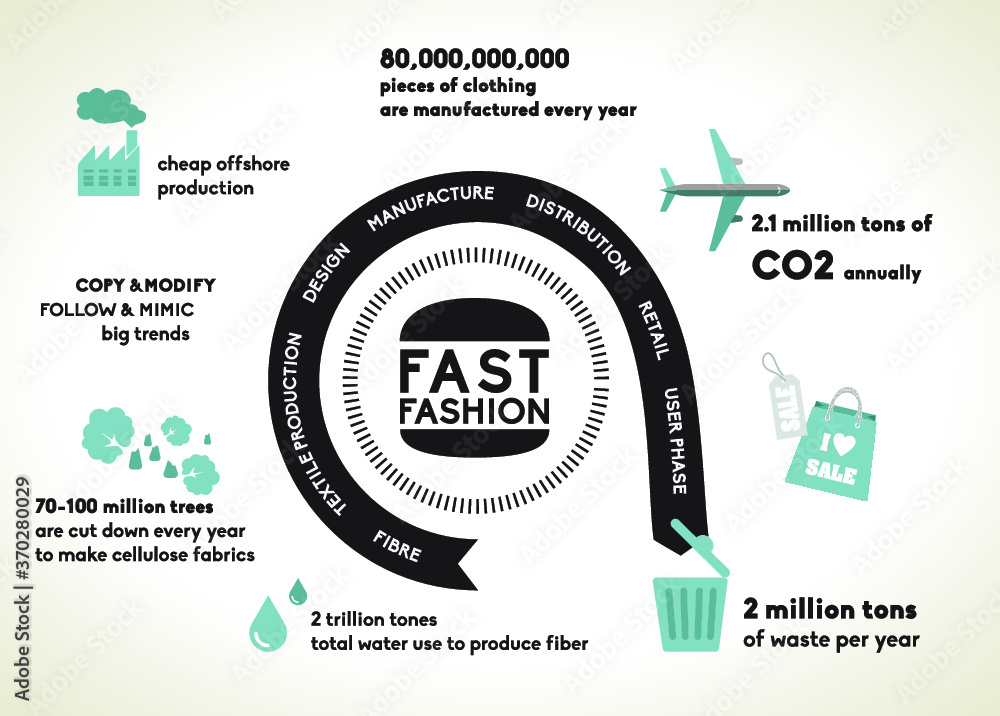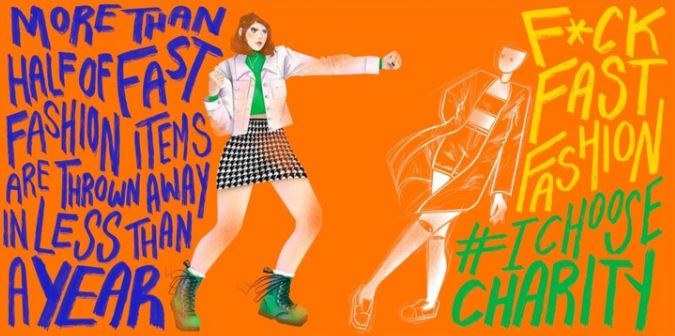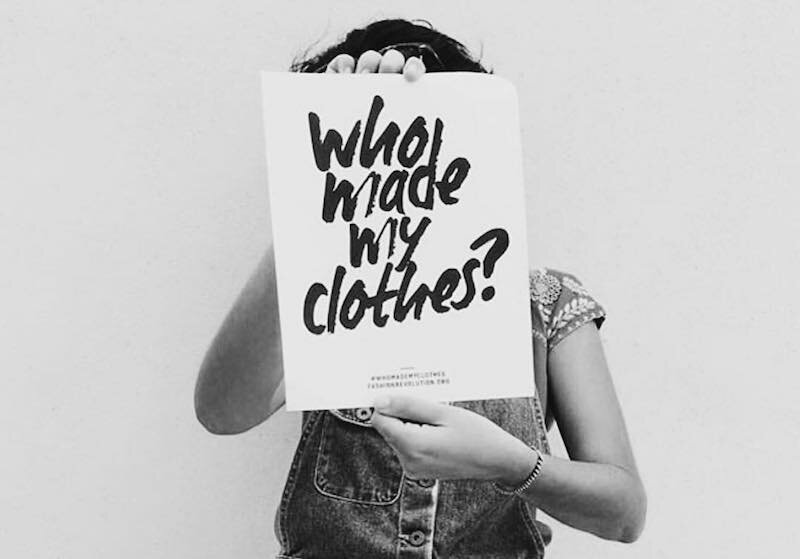By Anna Tsekani,
Fast fashion is a recent phenomenon that is defining the clothing industry. The underlying issue with fast fashion is the rate at which it is produced, putting massive pressure on people and the environment, and sparking debate.
Fast fashion is a design, manufacturing, and marketing method, characterized as low-cost, trendy clothes focused on rapidly producing high volumes of clothing that quickly responds to customer demand by stealing by appropriating trends from the catwalk or celebrity culture and bringing them to the high street. Launching the newest trends as soon as feasible will allow people to purchase them while they are still in style. This idea supports the latest notion of wearing the newest trends as soon as they emerge. Fast fashion clothing is produced using low-quality materials (such as synthetic fabrics) and trend replication to provide consumers with affordable fashions.
Fast fashion is a new phenomenon that influences and shapes many aspects of human life, causing concern among both humans and scientists. Prior to the 1880s, fashion was characterized as slow because people were entirely responsible for the processing and weaning of materials, as well as the preparation of clothing.
Undoubtedly, the Industrial Revolution introduced new technologies and techniques to the gaming industry. Clothes manufacturing became simpler, faster, and less expensive. Dressmaking shops sprang up to serve the middle classes.
By the 1960s and 1970s, young people were inventing new trends, and clothing had become a form of self-expression, but there was still a distinction between high fashion and high street. The early 2000s and the late 1990s saw the height of low-cost fashion. Online shopping became popular, and fast-fashion retailers such as H&M, Zara, and Topshop dominated the high street. These brands replicated the looks and design elements of the top fashion houses quickly and cheaply. With everyone now having the ability to shop for trendy clothes whenever they wanted, it is easy to see how the trend caught on.

Despite the fact that the fast-fashion industry is expanding at a rapid pace, its impact on the environment is enormous. Because of the pressure to cut costs and speed up production, environmental corners are more likely to be cut. Fast fashion’s negative impact includes the use of cheap, toxic textile dyes, making the fashion industry, along with agriculture, one of the world’s largest polluters of clean water. That is why, over the years, Greenpeace has used its detoxing fashion campaigns to put pressure on brands to remove dangerous chemicals from their supply chains.
Cheap textiles also contribute to the impact of fast fashion. One of the most popular fabrics is polyester. It is derived from fossil fuels, contributes to global warming, and when washed, can shed microfibres that contribute to the increasing levels of plastic in our oceans. However, at the scale that fast fashion requires, even “natural” fabrics can be a problem. In developing countries, conventional cotton necessitates massive amounts of water and pesticides. This causes drought risks, extreme stress on water basins, and resource competition between businesses and local communities.
As a result of the constant speed and demand, other environmental areas, such as land clearing, biodiversity, and soil quality, are under increased stress. Leather processing also has an environmental impact, with 300kg of chemicals added for every 900kg of tanned animal hides.
The fashion industry, according to the United Nations, is responsible for 8-10% of global emissions while also consuming a large number of natural resources; thus, the role of fast fashion in climate change is undeniable. In reality, the use of raw materials causes an environmental impact on fashion: cotton for the fashion industry consumes approximately 2.5% of the world’s farmland, synthetic materials such as polyester consume an estimated 342 million barrels of oil per year, and clothing production processes such as dying consume 43 million tons of chemicals per year.

As more consumers question the true cost of the fashion industry, particularly fast fashion, a growing number of retailers have introduced so-called sustainable and ethical fashion initiatives such as in-store recycling schemes. However, only 0.1% of all clothing collected by charities and take-back programs is recycled into a new textile fiber.
The underlying problem with fast fashion is the rate at which it is produced, which puts enormous strain on people and the environment. Recycling and small eco or vegan clothing lines to combat fast fashion’s throw-away culture, waste, the strain on natural resources, and a slew of other issues The entire system must be altered.
References
- What Is Fast Fashion, Anyway?, thegoodtrade.com, Available here
- What Is Fast Fashion and Why Is It So Bad?, goodonyou.eco, Available here
- Fast fashion: How clothes are linked to climate change, bbc.com, Available here




